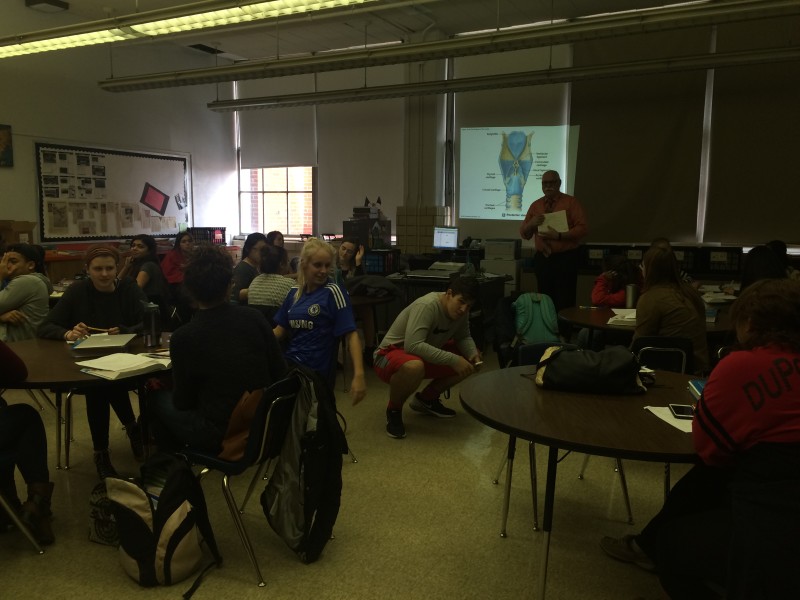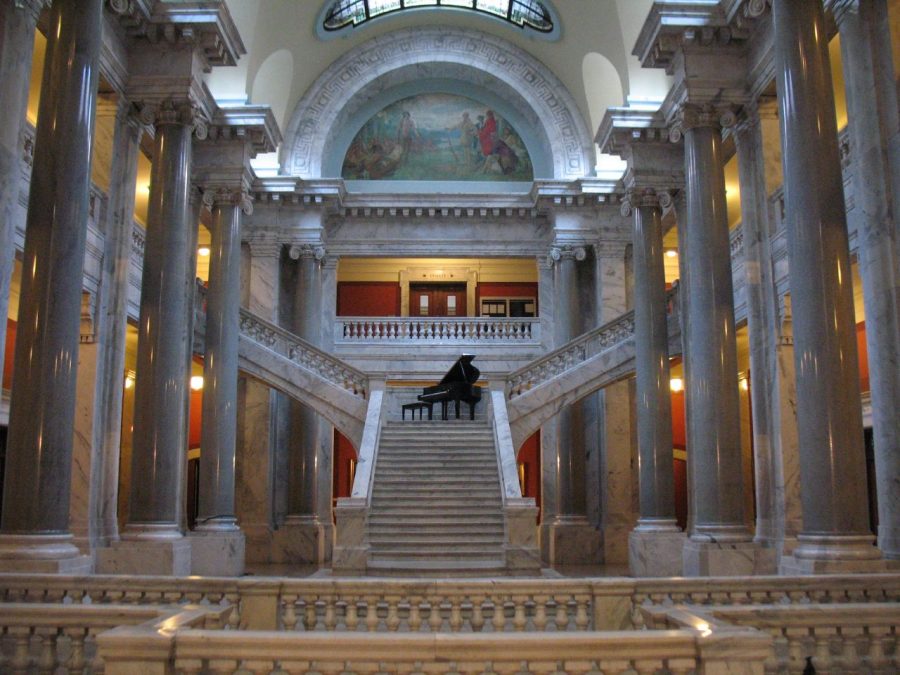
Manual’s Anatomy and Physiology classes had the rare opportunity to view a broadcast of a live open heart surgery on Wednesday, Feb. 17. The screening, which was organized by Mr. Anthony Testerman (Science) alongside Jewish Hospital and the Kentucky Science Center, lasted approximately three hours and was shown in the auditorium.
Students were able to view the full procedure from start to finish, and had the opportunity to interact in real time with the program operators.
“The program was put together in 2010, and when I was hired here a year ago, I heard about it and called them up,” Testerman said. “They provided me with all the information I needed, and with the help of a gentleman over at University of Louisville, we were able to watch a video conference [of the surgery] live. The broadcast was a good opportunity for students—especially those interested in the medical field—to see all of the preparation and intricacies of a surgery.”
Weijing Huang (12, MST) said that she found certain elements of the procedure to be surprising.
“I learned about the small technicalities, and it was interesting to see very meticulous procedures, such as the sutures, being done live,” she said. “The heart was a lot bigger and more yellow than I expected. There was a lot less chaos than expected for an open heart surgery.”
Even for students who don’t necessarily plan to pursue a career in medicine, like Hayley Watson (12, J&C), the surgery provided an interesting look into the medical world.
“It was a great experience to see just how many people assist on any given surgery and how much time and effort it takes to help save these people’s lives,” Watson said. “Each member of the surgical operation team told us their role and experiences, so I was never left confused as to who was doing what.”
For Huang, watching the live procedure provided an interesting contrast between the theoretical realm of anatomy textbooks and the practical application of real surgery.
“It was important to see the surgery live because the organs in real life don’t really look like the ones you see in pictures and textbooks in terms of color and sometimes structure,” she said.
Watson also felt that viewing the surgery in real time was a unique experience. For her, the broadcast helped her understand the importance of what she’d been learning in class all year.
“Something that really surprised me was that the patient was a male that had actually had a heart attack the weekend before we watched the surgery,” Watson said. “So upon cutting him open and doing the coronary bypass, I was able to see the bruising in the area where he had the heart attack. That was a once in a lifetime opportunity.”




